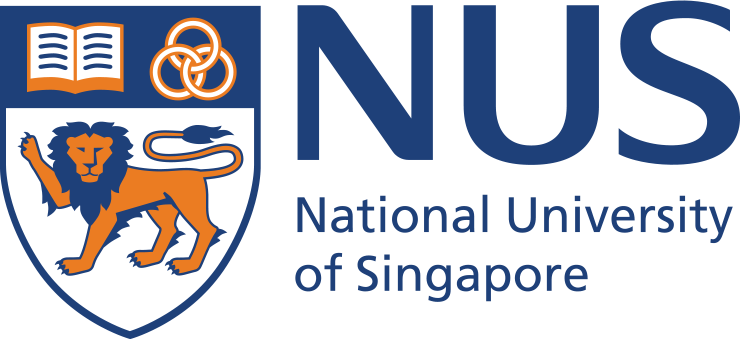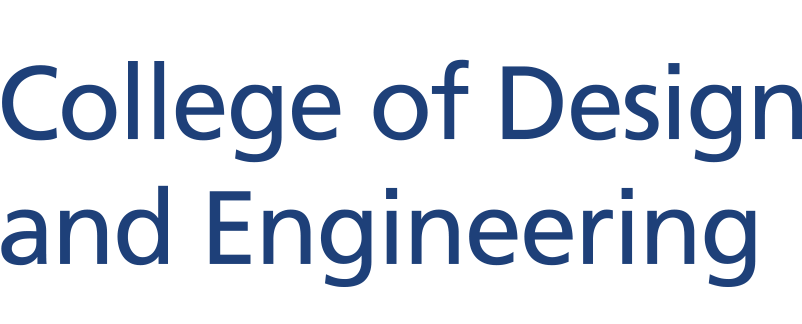RESEARCH IMPACT & COLLABORATIONS
CDE welcomes inaugural Applied Materials–NUS Visiting Chair Professor

Professor Erwin Kessels began his appointment as the inaugural Applied Materials–NUS Visiting Chair Professor with his first visit to NUS in March 2025. His visit marked the start of a collaborative exchange focused on advancing semiconductor innovation through global partnership, technical expertise, and talent development.
Professor Kessels is based at Eindhoven University of Technology, where he leads the Plasma & Materials Processing group. He is widely recognised for his work in atomic layer deposition (ALD), thin-film growth, and surface diagnostics — research that has contributed to progress in nanoelectronics and semiconductor fabrication.
Across three visits spanning 2025 and 2026, Professor Kessels will work with CDE researchers, Applied Materials teams, and national partners. His role includes academic engagement, mentoring, and supporting joint research aligned with Singapore’s broader ambitions in the semiconductor sector.
His first visit in March featured the ALD Academy, a two-day programme that brought together students, postdoctoral researchers, and industry professionals to explore ALD fundamentals and advanced applications. Two further visits are planned for October 2025 and February 2026, including additional workshops and outreach to researchers in Singapore and Europe.
“We are proud to welcome Professor Kessels to CDE as the first Applied Materials–NUS Visiting Chair Professor,” said Professor Silvija Gradečak-Garaj, Vice Dean (Research) at CDE and co-Director of the Applied Materials-NUS Advanced Materials Corporate Lab. “This role reflects our commitment to growing meaningful international partnerships that not only drive research excellence, but also foster mentorship, collaboration, and innovation across the semiconductor ecosystem.”


The Applied Materials–NUS Visiting Chair Professorship was introduced alongside the Phase II expansion of the Applied Materials–NUS Advanced Materials Corporate Lab, co-hosted by CDE and the Faculty of Science. While the expanded lab strengthens research infrastructure, the professorship reflects a parallel focus on talent development, knowledge exchange, and research leadership.
This aligns closely with Applied Materials’ vision for the Professorship and its long-term partnership with NUS.
“Through the Professorship, Applied Materials is proud to contribute to a pipeline of talent and research collaborations and connect global academic leaders and experts with Singapore's semiconductor ecosystem,” the company shared. “Together with NUS, we aim to tackle some of the world's most pressing challenges in advanced materials for next-generation semiconductors, microelectronics and process engineering.”
At the lab’s launch event, Deputy Prime Minister Heng Swee Keat spoke of the importance of attracting global expertise to Singapore and nurturing the next generation of innovators. This new professorship is one way that NUS is contributing to that effort.
The appointment of Professor Kessels underscores NUS and CDE’s continued commitment to research excellence, international collaboration, and the development of a skilled semiconductor workforce in Singapore.
AI model maps building emissions to support fairer climate policies

“Building emissions are not just about size or density, they’re deeply shaped by the unique context of each city, from its planning legacy to climate and economic conditions.”
Researchers at CDE, led by Asst Prof Filip Biljecki (Architecture), have developed an open workflow that maps carbon emissions at the building level using only publicly available data. The team’s findings were published recently in the journal Nature Sustainability.
Tested in cities like Singapore, New York and Melbourne, the model reveals how planning history, income levels and urban form shape emissions patterns. It also shows that a small number of buildings often account for a large share of a city's emissions.
The tool could help city planners design more targeted and equitable climate policies.
“This work demonstrates the potential of open science and AI to accelerate urban sustainability,” said Asst Prof Biljecki.
Read more here: https://cde.nus.edu.sg/news-detail/ai-model-maps-building-emissions-to-support-fairer-climate-policies/
New co-assembly strategy unlocks robust circularly polarised luminescence across the colour spectrum

“The ability to produce strong CPL across the visible spectrum broadens the scope for practical applications, particularly in photonic devices that require low optical losses and high signal discrimination," said Professor Zhiqun Lin (NUS Chemical and Biomolecular Engineering).
Prof Lin and his team, research fellows Kim Minju and Mingyue Zhang, developed a new way to make chiral soft materials that emit circularly polarised luminescence (CPL) in all colours of visible light, including the challenging red, with long-term stability of more than 100 days.
The resulting structures can hold its colour quality and light polarisation for over 100 days at room temperature, even after being heated and cooled repeatedly. As most CPL materials lose their optical performance within days or weeks, this level of stability makes them far more viable for real-world use in devices that need to be long-lasting.
The team's findings were published in Science on 14 August 2025.
These materials could transform:
- 3D displays with sharper depth and colour control
- Quantum photonic circuits that rely on precise photon spin control
- Anti-counterfeiting technologies with secure optical features
- Other devices where light polarisation and clarity are key
The method combines star-shaped polymers with simple chiral additives to produce robust structures that are nearly twice as stiff and hard as non-chiral versions. These structures transfer chirality from small molecules to large-scale assemblies, producing bright, stable, and tunable CPL.
Read more about the team's work at https://cde.nus.edu.sg/news-detail/new-co-assembly-strategy-unlocks-robust-circularly-polarised-luminescence-across-the-colour-spectrum/
Graphene reaches ultimate electronic quality — two breakthrough methods push graphene beyond semiconductor limits.

Researchers at the College of Design and Engineering, National University of Singapore, with collaborators from across several different institutions, have demonstrated two distinct methods to overcome the disorder that has long limited the electronic quality of graphene, a one-atom-thick sheet of carbon. By reducing the uneven distribution of charge caused by defects, researchers used two methods — precisely controlling the twist angle with adjustable electrical screening and applying ultra-thin metallic layers nearby — to produce ultra-clean graphene with record-high mobilities. These advances enabled quantum effects to appear even under very weak magnetic fields, thus opening new possibilities for quantum technologies and ultra-fast electronics.
“Mobility is a measure of how easily electrons can move through a material when an electric field is applied. High mobility means electrons can travel faster and more freely, which is crucial for building faster and more energy-efficient electronic devices”, said Assistant Professor Alexey Berdyugin from the Department of Materials Science and Engineering, College of Design and Engineering, NUS. “Materials with high mobility are especially important for advanced computing, sensing and quantum technologies.”
“This opens up opportunities not just for fundamental research, but also for high-performance applications where ultra-clean materials are critical,” added Mr Ian Babich, a PhD student at NUS and first author of one of the studies.
Read the full article at https://cde.nus.edu.sg/news-detail/graphene-reaches-ultimate-electronic-quality-two-breakthrough-methods-push-graphene-beyond-semiconductor-limits/
Shaping the future of mechanical engineering for societal impact

CDE's Department of Mechanical Engineering and Tsinghua University’s Department of Mechanical Engineering have signed a Memorandum of Understanding (MOU) to enhance cooperation in research, education and innovation.
Bringing together two globally respected institutions, the partnership will focus on the following key areas:
Wearables
Intelligent Manufacturing
Additive Manufacturing
Circular Materials and Systems
Future Materials
Low Altitude Transportation
Decarbonisation of Energy
Robotics and Automation
Nanotechnology
Energy-Efficient Thermal and Storage Systems
The MOU supports joint research initiatives, academic exchanges, collaborative funding proposals and co-authored publications. It reflects a shared commitment to addressing global challenges through engineering, with an emphasis on sustainability and advanced technologies.
"We look forward to a fruitful collaboration that not only strengthens ties between Singapore and China but also contributes to shaping the future of mechanical engineering for societal impact," stated Professor Lee Poh Seng, Head, Department of Mechanical Engineering.
Seatrium Public Lecture explores offshore wind as the future of energy

“Floating offshore wind energy can be the game changer.”
On 7 August 2025, CDE hosted the third edition of the Seatrium Public Lecture Series at the NUS University Cultural Centre. The keynote speaker, Emeritus Professor Dr Gerard van Bussel, Seatrium Professor at NUS and a global expert in wind energy systems, shared how offshore wind technology is evolving and the role Singapore can play in the regional clean energy transition.
In his lecture, Offshore Wind: A Game Changer in Our Future Energy Supply, Prof van Bussel discussed the rapid upscaling of wind turbine technology, the emerging potential of floating offshore systems, and how offshore wind could power the production of renewable molecules such as green ammonia.
The event was opened by Professor Silvija Gradečak-Garaj, Vice Dean of Research & Technology at CDE, and Mr Mark Gainsborough, Chairman of Seatrium Ltd, and was graced by HE Mr Leif Trana, Ambassador of Norway to Singapore, and HE Mr Jakob Brix Tange, Ambassador of Denmark to Singapore.
Read the full recap here: https://cde.nus.edu.sg/news-detail/seatrium-public-lecture-series-explores-offshore-wind-as-the-future-of-energy/
Major Grants Awarded
The major grants (start date in August 2025) with total project value > $1M.
| Hosting Unit | Project Title | Funding Programme (Source of Funding) |
Principal Investigator |
| DOA | Urban Meteorology Nowcasting: Building Climate Health Resilience for the General Public in the Immediate Living Environment | NRF INVESTIGATORSHIP – 2024 / NRF | Yuan Chao |
| CQT | Information Theory at the Quantum Frontier | NRF INVESTIGATORSHIP – 2024 / NRF | Marco Patrick Tomamichel |
| MSE;CHI | Developing Liquid Wood Resin for Sustainable Specialty Polymers | A*STAR MANUFACTURING, TRADE AND CONNECTIVITY (MTC) PROGRAMMATIC FUND – 2025 / A*STAR | Yan Ning; He Chaobin |
| I-FIM | Dimensionality Reduction in Novel Superconductors: A Pathway from Quantum Sensors to Probabilistic Computing | NRF RESEARCH FELLOWSHIP (NRF-RF) – 2025 / NRF | Denis Bandurin |


